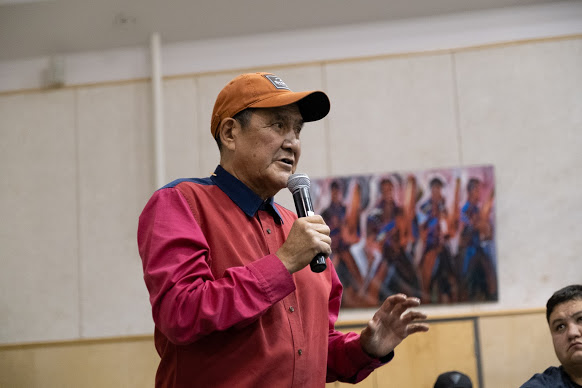Traditional Use
Gat Tah Kwą̂ lies just north of the city of Fort St. John. The name means “Spruce Among House”, which refers to the large number of teepees our people had here both before and after Europeans came to our land.
Montney Creek runs through Gat Tah Kwą̂. This creek, and the agricultural community now located here, were named after our Chief Montney. Chief Montney died here in 1918, at the age of seventy-two, during the Spanish flu epidemic.
The dancing grounds at Gat Tah Kwą̂ are called Suunéch’ii Kéch’iige, which means “The Place Where Happiness Dwells.” Elders such as May Apsassin, Tommy Attachie and Madeline Davis, remember how our people would gather there every summer to court, celebrate births, settle political issues, visit with relatives, and drum, sing and dance.
The Dreamer Gaayęą named one of his songs “Suunéch’ii Kéch’iige”. When our song keepers sing that song now, it reminds us of the importance of the Dreamers’ Dances we held there. Gaayęą died at Gat Tah Kwą̂ in 1923.
Members continued to gather at Gat Tah Kwą̂ every summer until 1945, when the Department of Indian Affairs (DIA), acting under pressure from the Veterans Lands Director to free up farmland for returning WW II veterans, convinced a few of us to surrender the reserve. The Indian Agent assured us this was in our best interest and promised that in return we would receive land closer to our traplines.
By 1948, the land at Gat Tah Kwą̂ was being divided up and given to veterans and we were forced to stay at Alááʔ S̱atǫ (Petersen’s Crossing), without a reserve and send our children to the Day School. It was not until 1952 that our reserves at Hanás̱ Saahgéʔ (Doig River) and Blueberry River were established.
In 1977, a Department of Indian Affairs agent discovered and reported to us that our sub-surface mineral rights to the Montney Reserve had been mishandled by the Department of Indian Affairs prior to the surrender of the lands to the Department of Veterans’ Affairs. The agent informed DRFN that we could go to court to be compensated. Within a year of this notification, Doig and Blueberry River First Nations began legal proceedings. This case took twenty years of legal action to reach the final settlement with the federal government and in 1998, the Nations settled out of court for breach of trust and lost oil and gas revenues. This case is referred to Apsassin vs. HTMQ.
Gerry Attachie was the Chief of DRFN from the beginning to the end of this momentous twenty-one-year fight for justice. Listen to him talk about the process.




